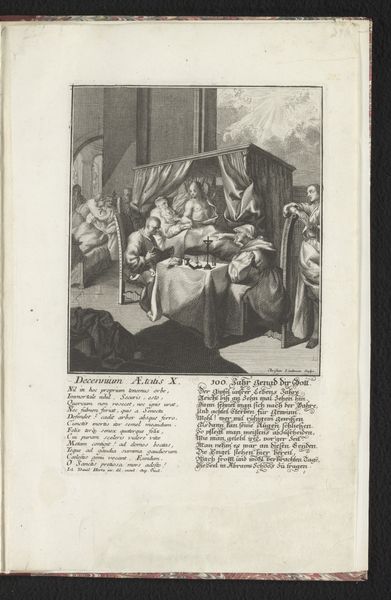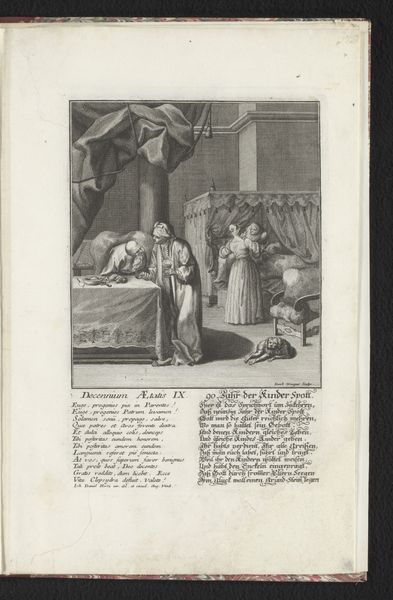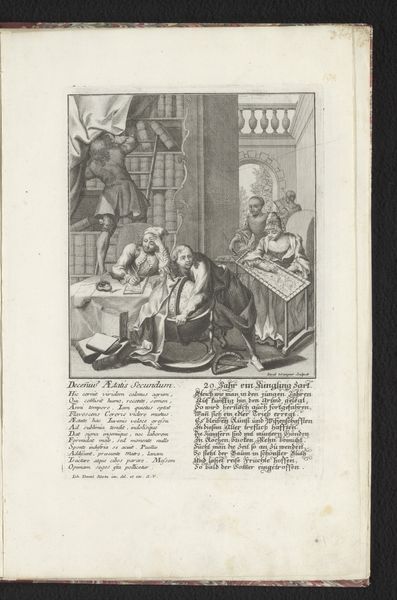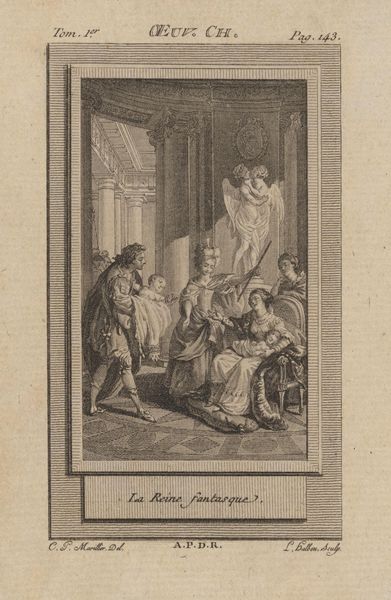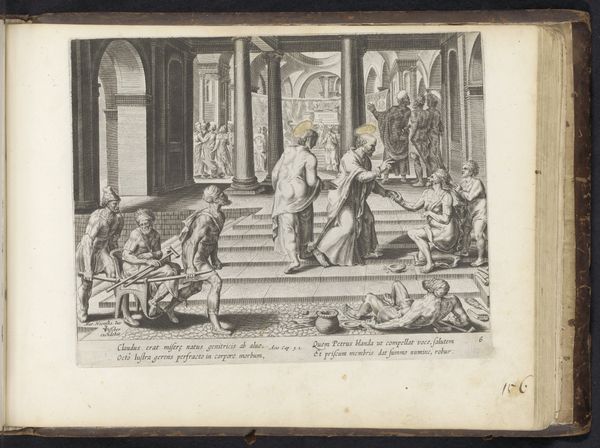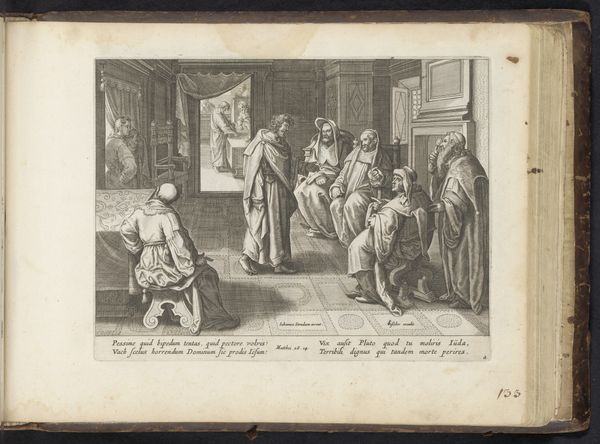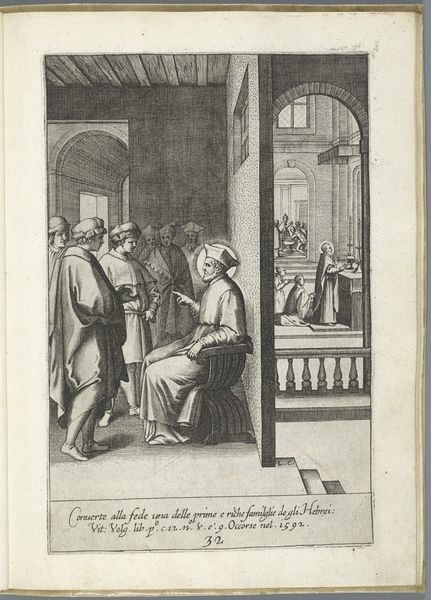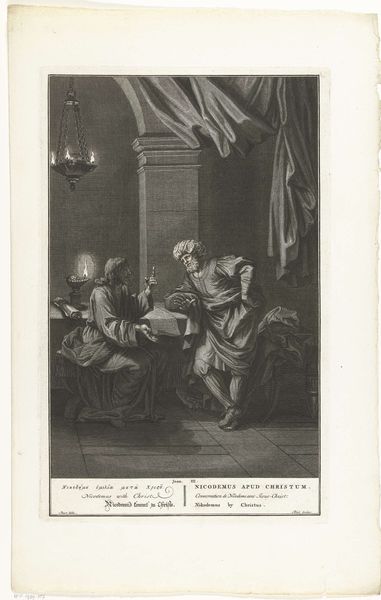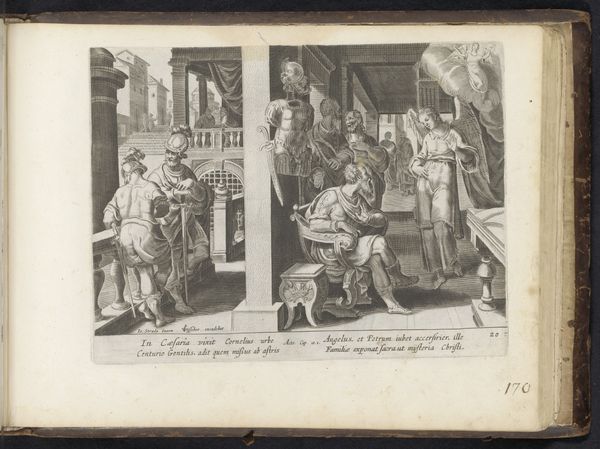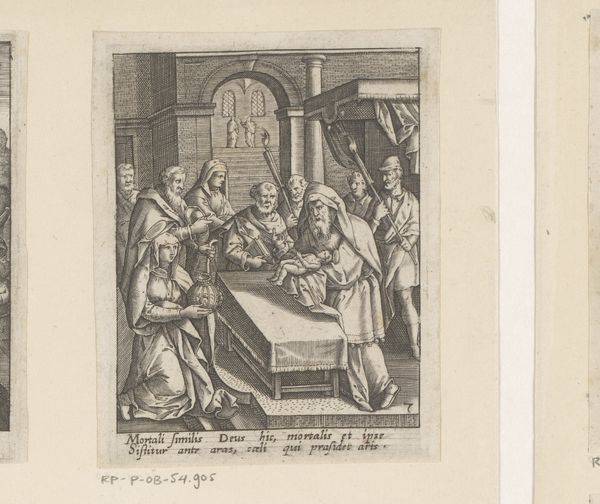
print, engraving
#
portrait
#
baroque
# print
#
genre-painting
#
engraving
Dimensions: height 240 mm, width 160 mm
Copyright: Rijks Museum: Open Domain
Editor: So, this engraving, "De mens op tienjarige leeftijd," or "The Human at Ten Years Old," by Jakob Wangner, dated around 1725 to 1730, has quite a narrative feel. The composition is really engaging. How do you interpret this work? Curator: What strikes me is how this domestic scene draws on enduring symbols of family and upbringing. Look at the details – the fruits being offered, the child learning to walk with support. Each element feels loaded. What might these items have symbolized in the cultural imagination of the 18th century, do you think? Editor: Maybe the fruits signify innocence or growth? It's interesting how childhood is depicted; not always carefree, it seems like it carries the weight of expectations, and even instruction. The crutches are a very obvious symbol of instruction but are the tools in the other tableau a subtle hint to what profession the boy may join? Curator: Precisely! You're tapping into layers of meaning. Remember, representations of childhood often reflect societal anxieties and aspirations. The artist’s choice to pair domestic coziness with symbols that gesture towards potential scholarly, perhaps religious, vocation speaks to the complicated process of socialization that can both support and confine children as they develop. Editor: I didn’t think of it that way. There's a subtle tension there between domestic comfort and the future expectations laid upon children. I will definitely remember to read images as signs of their cultural anxieties as well. Curator: Absolutely. That interplay is where much of the artwork's meaning resides. Keeping an eye out for these subtle cultural details provides a wonderful entry point for analyzing and reflecting upon artwork.
Comments
No comments
Be the first to comment and join the conversation on the ultimate creative platform.
